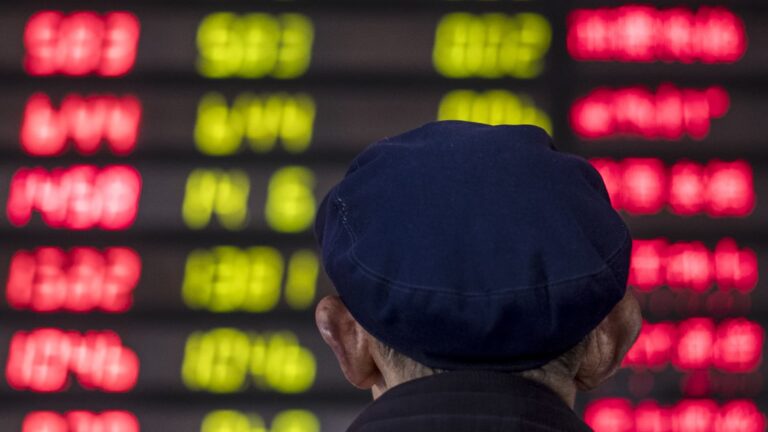Recently, mainland Chinese investors have often focused on the strength of U.S. stocks and lamented the underperformance of their home-grown stocks. Of course, macroeconomic differences are obvious. And few major Chinese stocks have more than doubled this year, like Nvidia. But looking at first-half performance, many Chinese stocks are still posting double-digit gains, including some artificial intelligence stocks. For example, let’s look at the top three performers in the CSI 300, which tracks the largest stocks on the Shanghai and Shenzhen stock exchanges. Foxconn Industrial Topping the list was Foxconn Industrial Internet, an Apple supplier. The Shanghai-listed company soared 81% in the first half of the year. Bank of America Securities has a buy recommendation on Foxconn Industrial Internet (FII), and on June 26 raised its target price to 33 yuan ($4.54), more than 20% above Friday’s closing price. “FII is a major supplier of iPhone cases, and cases are also a high-margin business for FII,” the analysts said. “With the iPhone shipment cycle expected to improve from 2025 to 2026, we expect strong case sales to support FII’s margins/revenues. Moreover, AI servers are alive and well, with a surge in demand and faster GPU platform upgrades (sustainable demand, [average selling price]Bank of America expects iPhone shipments to grow 3% and 6% this year and next, respectively. Avary Holdings Shenzhen-listed Avary Holdings came in a close second, up nearly 81% in the first half. The three largest overseas institutional investors by market capitalization were Hong Kong’s Standard Chartered Bank, HSBC and JPMorgan, according to data from Wind Information as of Thursday. After Avary’s latest earnings release in mid-May, analysts at Huatai said they expected the company to benefit from artificial intelligence-related demand for mobile phones and PCs. Huatai rates Avary a “buy.” “Avary has a strong advantage in the high-end market. [high-density interconnect circuit boards] “The company is well-positioned to capitalize on these trends as it expands into the flexible printed circuit sector,” Huatai analysts said. “Moreover, the company is expanding into new sectors such as automotive and servers, facilitating deeper collaboration with industry pioneers and attracting new customers.” Zhongji Innolight Ranking third in the CSI 300 performance in the first half of the year was Zhongji Innolight, up 70%. Nomura has a buy recommendation on Zhongji Innolight, and its analysts met with the optical communications company in late June. “Based on the company’s comments, we are increasingly confident about booming infrastructure demand driven by generative AI training and inference, which will benefit global leaders like Innolight,” Nomura analysts said in a June 23 report. “We believe Innolight should be able to maintain its leading position in the global optical transceiver market, thanks to the company’s technology-focused management team, strong execution, and solid relationships with the world’s top AI infrastructure customers,” the analysts said. The CSI 300 index as a whole is down slightly year to date, hurt by slowing economic growth and uncertainty about future earnings. This contrasts with the US Nasdaq Composite Index, which rose 18% in the first half of the year. Morningstar research manager Wanda Wang said the overall mainland China stock market, as measured by Class A shares, has underperformed over the past two years. That has made it harder for local actively managed funds to outperform, leading to an “influx of institutional investment” into index-linked ETFs. Capital controls have made it hard for many mainland investors to access overseas markets. But financial institutions have created ways for them to participate in the trend, albeit from afar. Take the Nasdaq-linked ETF managed by Invesco in collaboration with Great Wall. The ETF has been flooded with buyers and is trading at a premium of more than 10% to its net asset value. That has led to repeated trading halts on the Shenzhen Stock Exchange, where the ETF is traded, especially in the past week. —CNBC’s Michael Bloom contributed to this report.

